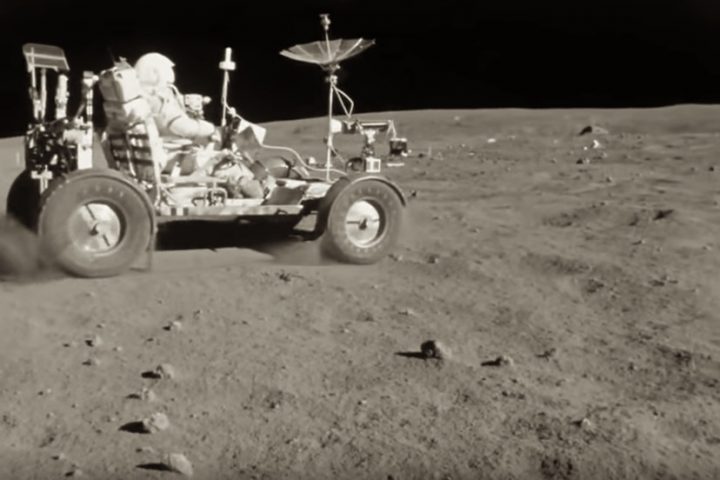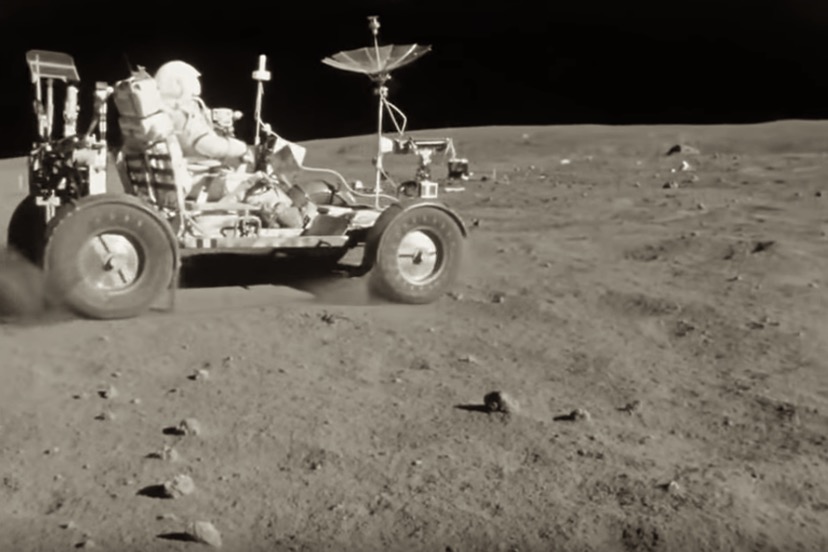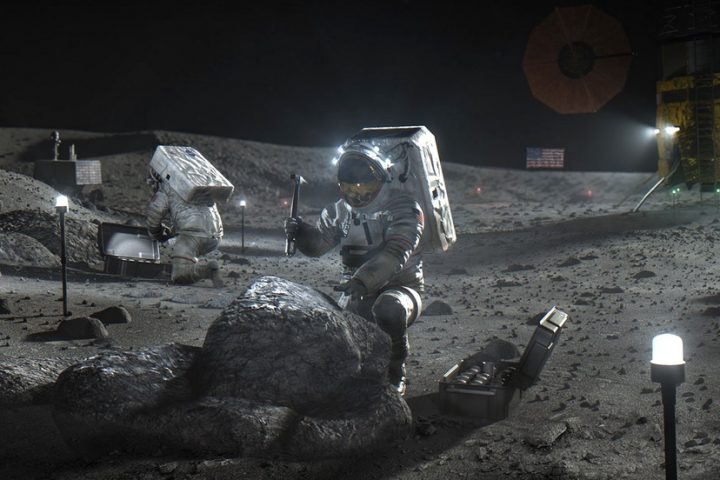We will collaborate with our commercial and international partners and establish sustainable exploration by the end of the decade. Then, we will use what we learn on and around the Moon to take the next giant leap – sending astronauts to Mars.
— from the NASA ‘Artemis’ website, July 2020.
In the merry month of July, 51 years ago, we sat anxiously in front of our TV sets and watched a rather unusual black-and-white video transmission: two Apollo 11 astronauts climbing out of their lunar landing module and taking a casual walk across the moon’s surface. (At least, they made it look casual, I thought.)
As far as we’ve been told, only 12 people have managed to land on the moon’s gray and dusty surface, and walk (or drive?) here and there, hunting for souvenirs… or a gas station.

Apparently, the souvenirs were not worth the trouble, because the US stopped sending Apollo astronauts (and cars) to the moon in 1972, and set right to work perfecting color TV.
Now I hear that NASA is preparing to send another batch of astronauts to the moon, possibly as soon as 2024 — and at least one of them will be a woman. The program has been labeled “Artemis”, an apparent reference to the Greek goddess who happened to be Apollo’s twin sister. (Not identical twins, of course, unless there was some kind of sex change involved, along the way.) NASA has this clever idea that it will be easier to send a space mission to Mars, if the rocket can lift off from the moon. Lower gravity, and all that. Saves gas.
How we will get the Mars rocket onto the moon, so it can lift off more easily, is not yet clear. (And we already discussed the shortage of gas stations on the moon.)
NASA recently posted an artist rendering of the Artemis mission, showing a man pounding on a rock with a hammer, and a woman packing a suitcase… clearly indicating that well-established gender roles will be strictly adhered to during the program.
Readers will also no doubt appreciate the solar powered lights shown on the illustration — part of NASA’s continuing effort to reduce the moon’s carbon footprint.
But speaking of Mars: The United Arab Emirates launched a mission to Mars last Sunday, broadening the nations exploring space. The UAE’s ‘Amal’ orbiter is scheduled to arrive in February to begin a two-year survey of the weather on the red planet, according to National Geographic Magazine. This could raise some issues for evangelical churches who are concerned about Mars becoming an Islamic Planet. (NASA is welcoming donations from concerned individuals who would like to see Mars remain Christian.)
Two other space-faring nations are also taking advantage of a ‘launch window’ this summer, when Earth and Mars are favorably aligned. China launched its ‘Tianwen-1’ lander and small rover this past Wednesday, July 22, although we don’t know much about the mission because the assembly instructions were written in Chinese.
NASA, meanwhile, is planning to launch the ‘Perseverance’ Martian rover next Thursday, July 30. An anonymous source inside the Trump administration claimed that the $2.7 billion mission will be exploring the red planet in hopes of finding a cure for COVID-19, although NASA officials have denied that claim.
Although I might sound excited about these daring missions — especially the idea of the co-ed Artemis mission, with a guy and a girl stuck in a tiny capsule for several days with almost nothing to distract them — I would be even more excited if my phone worked consistently.
Underrated writer Louis Cannon grew up in the vast American West, although his ex-wife, given the slightest opportunity, will deny that he ever grew up at all. You can read more stories on his Substack account.


